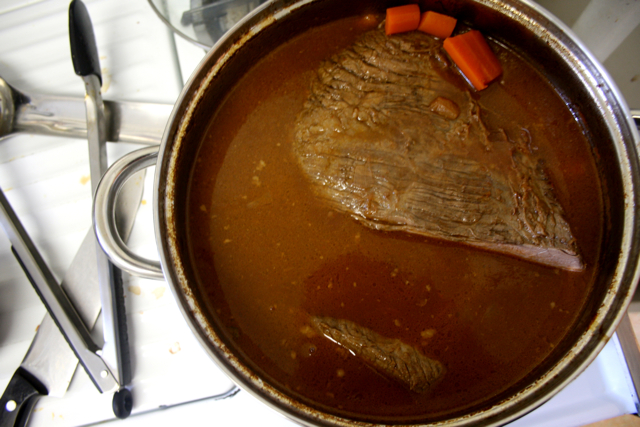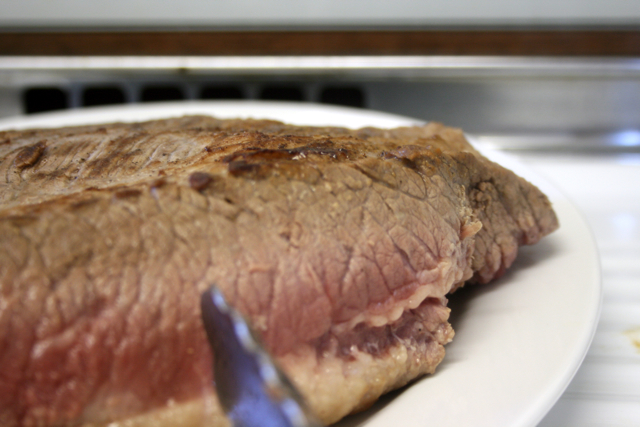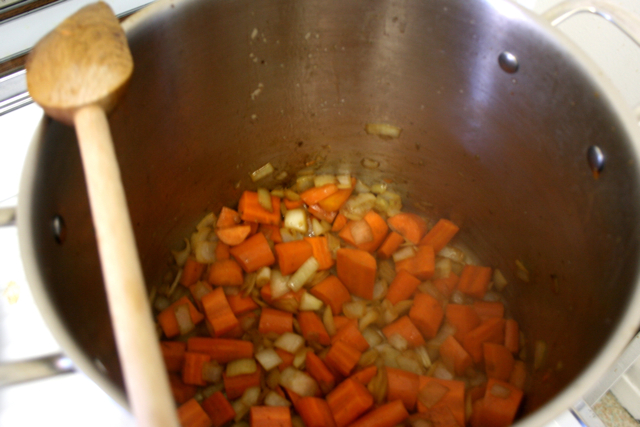Win Some, Lose Some: Braised Beef Brisket
12 Apr
Not everything I did this Passover was an epic failure. No, this year I also made something I never thought I could handle: the brisket.

Not just brisket, but the brisket. The lynchpin of the post-seder meal, a recipe that your grandma’s probably been perfecting since before your parents were born. It’s a lot of pressure, but I was confident I could do it after reading Alice Waters’ “Slow Food” essay in Da Capo’s Best Food Writing 2008 (I believe the esssay also appears in her Art of Simple Food book). “Nothing creates a sense of well-being like a barely simmering braise or stew cooking quietly on the stove or in the oven,” Waters writes. I called Aunt Susan to see if I would be trusted with the task–after all, I’d have to make this recipe for the project eventually, right?
It wasn’t until she said yes that it really hit me: I was making the brisket. Gefilte fish, that’s manageable, no one likes that stuff anyway. Worst comes to worst we eat from the jar. But the brisket cannot be messed with. Then again, there’s something fun about having a slab of meat (there were actually two of these) this huge in your kitchen:

The most important thing, from what I’m told, is to find a good cut of brisket, where “good” means fatty. Anyway, Bittman’s recipe in How to Cook Everything is, of course, pretty simple. Takes about three hours to cook, but there’s not a whole lot going on, and barely even any prep work. I added carrots where he says just onions, but other than that I followed it pretty much exactly, and it came out great.

You brown the meat on both sides. Then you pour off the fat, and throw in the onions (and carrots, in my case). Let those soften and then throw in some minced garlic and tomato paste.

Stir, return the meat to the pan, and then add stock, to almost cover the meat. Cover, stick it in the oven (300 degrees) and let it go for about 2 1/2 hours, turning it over every 30 minutes or so.

And it works. The slow cooking really breaks down the connective tissue and fat in the meat and makes it really tender as it cooks. It’s a bit disconcerting, because the meat definitely got really tough about 90 minutes into cooking, but then it came back around to tenderness by the three hour mark (it took more than 2 1/2 hours).

I let it rest, sliced it, and it was ready to go. Everyone at the seder seemed to enjoy it (I swear even my vegetarian cousins were eating the stuff), and I must say that it was even better as leftovers. A few days sitting in its own gravy works wonders, truly.

3 Responses to “Win Some, Lose Some: Braised Beef Brisket”